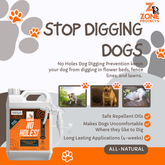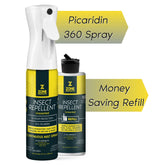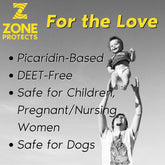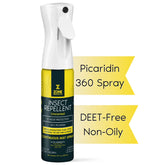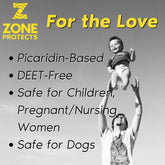When Pets Dare to Chew
American Society for the Prevention of Cruelty to Animals (ASPCA), 2022 with contributions by Brian Baer, Zone Protects
Separation Anxiety
Dogs who chew to relieve the stress of separation anxiety usually only chew when left alone or chew most intensely when left alone. They also display other signs of separation anxiety, such as whining, barking, pacing, restlessness, urination and defecation. To learn more about separation anxiety and how to treat it, please see our article, Separation Anxiety.
Fabric Sucking
Some dogs lick, suck and chew at fabrics. Some experts believe that this behavior results from having been weaned too early (before seven or eight weeks of age). If a dog’s fabric-sucking behavior occurs for lengthy periods of time and it’s difficult to distract him when he attempts to engage in it, it’s possible that the behavior has become compulsive. If you think this might be the case with your dog, please see our article, Finding Professional Behavior Help, for information about finding a Certified Applied Animal Behaviorist (CAAB), a board-certified veterinary behaviorist (Dip ACVB) or a Certified Professional Dog Trainer (CPDT) with specialized training and experience in treating compulsive behavior.
Hunger
A dog on a calorie-restricted diet might chew and destroy objects in an attempt to find additional sources of nutrition. Dogs usually direct this kind of chewing toward objects related to food or that smell like food.
How to Manage or Reduce Your Dog’s Destructive Chewing
Puppy Teething
The desire to investigate interesting objects and the discomfort of teething motivate puppies to chew. Much like human infants, puppies go through a stage when they lose their baby teeth and experience pain as their adult teeth come in. This intensified chewing phase usually ends by six months of age. Some recommend giving puppies ice cubes, special dog toys that can be frozen or frozen wet washcloths to chew, which might help numb teething pain. Although puppies do need to chew on things, gentle guidance can teach your puppy to restrict chewing to appropriate objects, like his own toys.
Normal Chewing Behavior
Chewing is a perfectly normal behavior for dogs of all ages. Both wild and domestic dogs spend hours chewing bones. This activity keeps their jaws strong and their teeth clean. Dogs love to chew on bones, sticks and just about anything else available. They chew for fun, they chew for stimulation, and they chew to relieve anxiety. While chewing behavior is normal, dogs sometimes direct their chewing behavior toward inappropriate items. Both puppies and adult dogs should have a variety of appropriate and attractive chew toys. However, just providing the right things to chew isn’t enough to prevent inappropriate chewing. Dogs need to learn what is okay to chew and what is not. They need to be taught in a gentle, humane manner.
Useful Tips
“Dog-proof” your house. Put valuable objects away until you’re confident that your dog’s chewing behavior is restricted to appropriate items. Keep shoes and clothing in a closed closest, dirty laundry in a hamper and books on shelves. Make it easy for your dog to succeed.
Use Zone Protects Don't Chew Dare Chewing Deterrent training aid.
Provide your dog with plenty of his own toys and inedible chew bones. Pay attention to the types of toys that keep him chewing for long periods of time and continue to offer those. It’s ideal to introduce something new or rotate your dog’s chew toys every couple of days so that he doesn’t get bored with the same old toys. (Use caution: Only give your dog natural bones that are sold specifically for chewing. Do not give him cooked bones, like leftover t-bones or chicken wings, as these can splinter and seriously injure your dog. Also keep in mind that some intense chewers may be able to chip small pieces off of natural bones or chip their own teeth while chewing. If you have concerns about what’s safe to give your dog, speak with his veterinarian.)
Offer your dog some edible things to chew, like bully sticks, pig ears, rawhide bones, pig skin rolls or other natural chews. Dogs can sometimes choke on edible chews, especially if they bite off and swallow large hunks. If your dog is inclined to do this, make sure he’s separated from other dogs when he chews so he can relax. (If he has to chew in the presence of other dogs, he might feel that he has to compete with them and try to quickly gulp down edible items.) Also be sure to keep an eye on your dog whenever he’s working on an edible chew so that you can intervene if he starts to choke.
Identify times of the day when your dog is most likely to chew and give him a puzzle toy filled with something delicious. You can include some of your dog’s daily ration of food in the toy.
Discourage chewing inappropriate items by spraying them with chewing deterrents. When you first use a deterrent, apply a small amount to a piece of tissue or cotton wool. Gently place it directly in your dog’s mouth. Allow him to taste it and then spit it out. If your dog finds the taste unpleasant, he might shake his head, drool or retch. He won’t pick up the piece of tissue or wool again. Ideally, he will have learned the connection between the taste and the odor of the deterrent, and he’ll be more likely to avoid chewing items that smell like it. Spray the deterrent on all objects that you don’t want your dog to chew. Reapply the deterrent every day for two to four weeks. Please realize, however, that successful treatment for destructive chewing will require more than just the use of deterrents. Dogs need to learn what they can chew as well as what they can’t chew.
Do your best to supervise your dog during all waking hours until you feel confident that his chewing behavior is under control. If you see him licking or chewing an item he shouldn’t, say “Uh-oh,” remove the item from your dog’s mouth, and insert something that he CAN chew. Then praise him happily. If you suspect that your dog might react aggressively if you remove an item from his mouth, please see our Finding Professional Behavior Help article for information about finding a Certified Applied Animal Behaviorist (CAAB or Associate CAAB), a board-certified veterinary behaviorist (Dip ACVB) or a Certified Professional Dog Trainer (CPDT) with specialized training in treating aggression for guidance.
When you can’t supervise your dog, you must find a way to prevent him from chewing on inappropriate things in your absence. For example, if you work during the day, you can leave your dog at home in a confinement area for up to six hours. Use a crate or put your dog in a small room with the door or a baby gate closed. Be sure to remove all things that your dog shouldn’t chew from his confinement area, and give him a variety of appropriate toys and chew things to enjoy instead. Keep in mind that if you confine your dog, you’ll need to give him plenty of exercise and quality time with you when he’s not confined.
Use Zone Protects Don't Chew Dare Chewing Deterrent training aid.
Provide your dog with plenty of physical exercise (playtime with you and with other dogs) and mental stimulation (training, social visits, etc.). If you have to leave your dog alone for more than a short period of time, make sure he gets out for a good play session beforehand.
To help your dog learn the difference between things he should and shouldn’t chew, it’s important to avoid confusing him by offering unwanted household items, like old shoes and discarded cushions. It isn’t fair to expect your dog to learn that some shoes are okay to chew and others aren’t.
Some puppies and juvenile dogs like to chew dirty underwear. This problem is most easily resolved by always putting dirty underwear in a closed hamper. Likewise, some puppies and dogs like to raid the garbage and chew up discarded sanitary napkins and tampons. This can be very dangerous. If a dog eats a sanitary item, it can expand while moving through his digestive system. Discard napkins and tampons in a container that’s inaccessible to your dog. Most young dogs grow out of these behaviors as they mature.
Lack of Exercise or Mental Stimulation
Some dogs simply do not get enough physical and mental stimulation. Bored dogs tend look for ways to entertain themselves, and chewing is one option. To prevent destructive chewing, be sure to provide plenty of ways for your dog to exercise his mind and body. Great ways to accomplish this include daily walks and outings, off-leash play with other dogs, tug and fetch games, clicker training classes, dog sports (agility, freestyle, flyball, etc.), and feeding meals in food puzzle toys.
Stress and Frustration
Sometimes a dog will chew when experiencing something that causes stress, such as being crated near another animal he doesn’t get along with or getting teased by children when confined in a car. To reduce this kind of chewing, try to avoid exposing your dog to situations that make him nervous or upset.
Dogs who are prevented from engaging in exciting activities sometimes direct biting, shaking, tearing and chewing at nearby objects. Shelter dogs and puppies sometimes grab and shake blankets or bowls in their kennels whenever people walk by because they’d like attention. When they don’t get it, their frustration is expressed through destructive behavior. A dog who sees a squirrel or cat run by and wants to chase but is behind a fence might grab and chew at the gate. A dog watching another dog in a training class might become so excited by the sight of his canine classmate having fun that he grabs and chews his leash. (Agility and Flyball dogs are especially prone to this behavior because they watch other dogs racing around and having a great time, and they want to join in the action.) The best intervention for this problem is to anticipate when frustration might happen and give your dog an appropriate toy for shaking and tearing. In a class situation, carry a tug or stuffed toy for your dog to hold and chew. If your dog is frustrated by animals or objects on the other side of a fence or gate at home, tie a rope toy to something sturdy by the gate or barrier. Provide shelter dogs and puppies with toys and chew bones in their kennels. Whenever possible, teach them to approach the front of their kennels and sit quietly to solicit attention from passersby.
What NOT to Do
- Do not show your dog the damage he did and spank, scold or punish him after the fact. He cannot connect your punishment with some behavior he did hours or even minutes ago.
- Do not use duct tape to hold your dog’s mouth closed around a chewed object for any length of time. This is inhumane, will teach your dog nothing, and dogs have died from this procedure.
- Do not tie a damaged object to your dog. This is inhumane and will teach your dog nothing.
- Do not leave your dog in a crate for lengthy periods of time (more than six hours) to prevent chewing.
- Do not muzzle your dog to prevent chewing.
Don't get frustrated, use Zone Protects Don't Chew Dare Chewing Deterrent training aid.


